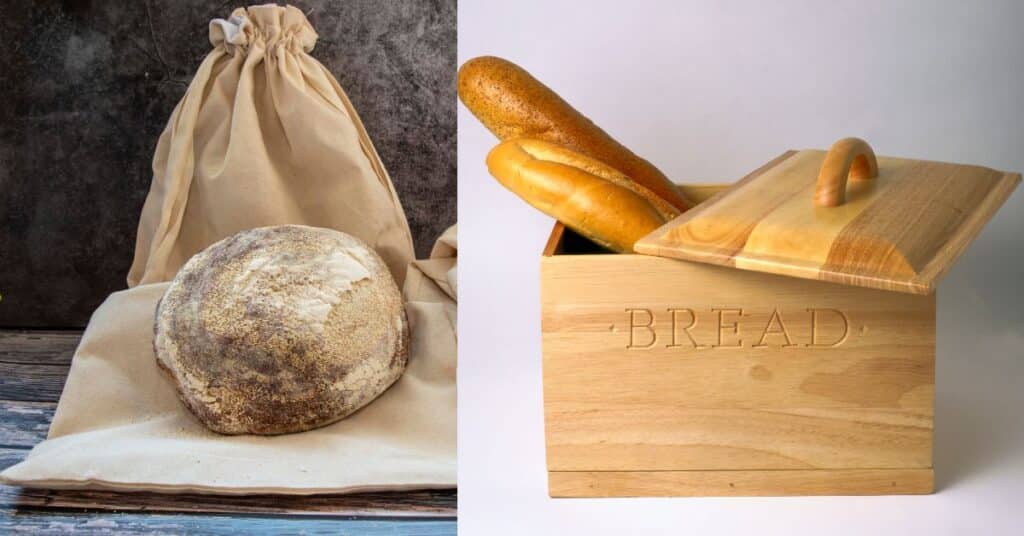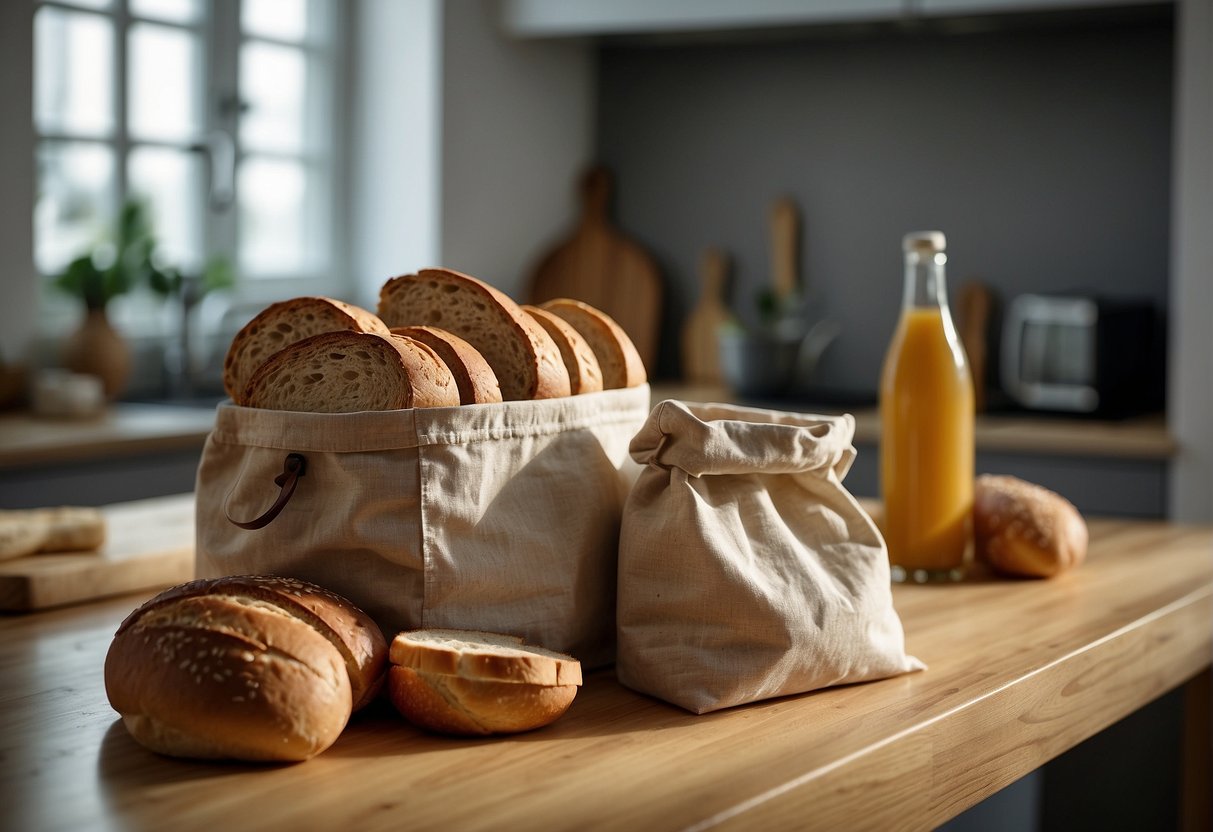Storing your bread properly is key to keeping it fresh and delicious, and when it comes to bread storage, you might be wondering which option is best for you: a linen bread bag or a bread box. Both options have their unique benefits and can make a significant difference in extending the life of your bread. A linen bread bag is a breathable storage solution, which is great for maintaining the crust’s crispness, while a bread box provides a more controlled environment that can keep your bread soft.

Linen bread bags are made from a natural fabric that allows air to circulate, preventing moisture from building up and leading to mold. They’re a fantastic choice if you prefer your bread with a crunchy crust, as they tend to draw away excess moisture that can soften the crust. On the other hand, bread boxes come in various materials, including wood, metal, and plastic, and they provide a larger storage space that can accommodate different bread sizes and shapes. Bread boxes keep a consistent humidity level, which can help to keep bread from drying out too quickly.
Choosing between a linen bread bag and a bread box may come down to your personal preference, the type of bread you typically buy or make, and how quickly you consume it. Whether you opt for the traditional appeal of a bread box or the minimalist convenience of a linen bread bag, you’ll be taking a positive step towards fresher, tastier bread at home. Consider what’s important for your bread-eating habits, and you’ll find the right solution for your kitchen.
Materials and Design
When choosing between a linen bread bag and a bread box, the materials and design are crucial factors to consider for maintaining the freshness and extending the shelf life of your bread.
Linen Bread Bags
Linen bread bags are made from natural linen, a fabric derived from flax fibers. Known for its breathability and absorbency, linen naturally wicks away moisture, which is beneficial in keeping bread from becoming stale due to excess moisture. Linen is also strong and durable, making these bags a reusable and eco-friendly alternative to plastic bags.
Bread Boxes
Bread boxes come in various materials such as wood, stainless steel, and plastic. Wood boxes offer a classic aesthetic and can help in maintaining an even humidity level. Stainless steel boxes are sturdy and resistant, while plastic options are often lightweight and inexpensive. Regardless of the material, the design of a bread box typically includes ventilation to prevent mold growth.
Comparing Durability and Maintenance
Linen bags withstand frequent use and can be cleaned in the washing machine, while wooden bread boxes might require hand wiping and stainless steel can show fingerprints. Plastic boxes are often dishwasher safe, making them convenient to care for. Each material offers a different level of strength and durability.
Bread Bags vs. Boxes: Environmental Impact
Linen, as a natural fiber, has a smaller environmental footprint than plastic bread boxes. It is biodegradable and made from the flax plant, a renewable resource. Wooden boxes can also be a sustainable choice if sourced from responsibly managed forests. Reusable options like linen or cotton bags reduce reliance on single-use plastics.
Price and Affordability
Prices vary widely based on the material and brand:
- Linen bread bags: $10 – $30
- Wooden bread boxes: $25 – $100
- Stainless steel bread boxes: $20 – $80
- Plastic bread boxes: $10 – $50
Your budget will guide your choice, with cost reflecting factors such as material quality and design complexity.
Storing Different Types of Bread

Linen bags may be ideal for crusty bread, allowing air circulation while minimizing humidity that can soften the crust. Bread boxes, on the other hand, can be preferable for soft, fresh bread as they protect against air exposure that hastens drying out.
Bread Storage Tips
- Keep bags and boxes clean to prevent mold.
- Use a kitchen towel inside a bread box for additional absorbency.
- For homemade bread, wait until it’s completely cool before storage.
Size and Space Considerations
- Linen bags are portable and easily foldable when not in use.
- Bread boxes are stationary and can take up significant counter or shelf space in your kitchen.
Choose based on the size of your kitchen and available storage space.
Humidity and Climate Factors
In a humid climate, look for storage that wicks away excess moisture. Linen bags are suitable in these environments, but in very dry areas, a bread box that retains some moisture might prevent your bread from drying out too quickly.
Deciding Between Bread Bags and Boxes
Your choice depends on personal preference, the types of bread you eat, and how quickly you consume it. Consider the importance of freshness versus convenience, texture, and the design style you prefer for your kitchen.
Accessories and Alternatives
- Cotton bread bags provide similar benefits to linen with different texture and wrinkle characteristics.
- Bread baskets offer a more open storage option.
- Cloth bag options vary in material, from cotton fabric to natural fiber blends.
Shopping for Bread Storage
When looking to purchase, consider the following:
- Decide on the type of bread you commonly buy or bake.
- Measure the space you have available in your kitchen.
- Think about how often you’ll need to clean the container.
- Assess the durability and versatility of the material.
Frequently Asked Questions
When it comes to bread storage, you might wonder about the effectiveness of different methods. Here, we’ll address some common queries regarding the use of linen bread bags compared to bread boxes.
What are the benefits of storing bread in a linen bag?
Linen bags are breathable, allowing excess moisture to escape, which helps to prevent mold and keep bread crusty. They’re also eco-friendly and can be easily washed to maintain cleanliness.
How does a bread box compare to using a bag for bread storage?
A bread box provides a controlled environment that keeps your bread at optimal humidity levels, preserving softness and freshness longer. However, it can take up more countertop space than a linen bag.
Can you freeze bread effectively in linen bags?
While linen bags can be used for short-term freezer storage, they aren’t airtight and may not prevent freezer burn as effectively as freezer-safe plastic bags or wraps.
What is the best type of fabric for a bread bag to keep bread fresh?
Pure linen is highly recommended as it is natural, durable, and has anti-fungal properties that help extend the freshness of bread.
How do you properly use a bread bag to extend the freshness of bread?
To use a bread bag effectively, ensure your bread is cool before placing it in the bag. Tighten the closure to keep air out and store the bag in a cool, dry place.
What are the reasons for the decline in popularity of bread boxes?
The decline in the use of bread boxes can be attributed to smaller kitchens, the availability of preservative-laden bread with longer shelf life, and the rise of alternative storage options like linen bags.


